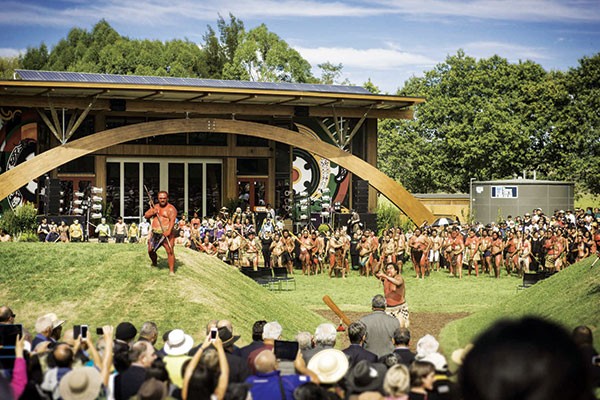Rating: 2/5
Part of the quintessential cinematic experience is going into the cinema knowing next to nothing about the film. With such logic, I was halfway toward the ultimate cinema experience. While it was initially thrilling, Ever the Land was also disappointing.
Directed by Sarah Grohnert, Ever the Land chronicles the back-and-forth struggle for land reclamation between Ngāi Tūhoe, a tribe in the eastern Bay of Plenty, and John Key’s National government. After agreeing on a hefty settlement and offering an official apology on behalf of the Crown, the government returned guardianship of their ancestral homeland, Te Urewera, to Tūhoe. Following the enactment of the Te Urewera Act 2014, Grohnert documents the tribe as a collective, discussions on New Zealand’s past and the construction of Te Wharehou o Tūhoe — New Zealand’s first living building.
From gentle flowing rivers to mystic mountains, the film’s stunning cinematography exposes us to a world of myth and surrealism. The director certainly plays on the folk legend of Tūhoe as being “Children of the Mist”, using a number of pillow shots to display misty mountains. This technique becomes her dominant aesthetic staple, used time and time again. The distinctive cinéma-vérité documentary style allows exclusive access to the inner sanctum of the Tūhoe leadership group but despite the stunning cinematography, the central narrative raises little excitement.
Ever the Land instigates an important discussion on culture and politics, where tradition and progressive ideals clash.



